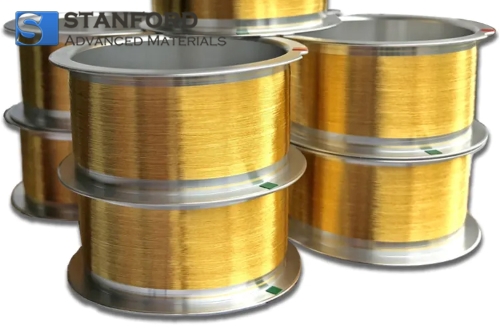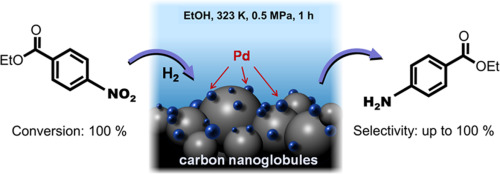Key Types of Wire Bonding Materials
Introduction
In semiconductor manufacturing, wire bonding establishes the electrical connections between chips and external circuitry. The selection of wire material is essential, as it affects bonding quality, electrical performance, and the long-term reliability of semiconductor devices. This article will introduce the most common wire materials used in wire bonding, including gold wire, gold-plated wire, copper wire, and copper alloy wire.
What Is Wire Bonding?
Wire bonding refers to the process of creating electrical and mechanical connections between semiconductor devices (such as integrated circuits and transistors) and external circuitry. The primary purpose of wire bonding is to ensure a stable and reliable connection between the chip and the package leads or substrate, allowing for proper signal transmission and device functionality.
1. Common Wire Bonding Methods:
Wire bonding is a process used to create electrical interconnections between a microchip and its package or between two chips. The main classes of wire bonding are:
- Ball Bonding:
This method involves forming a ball at the end of a wire using heat and then pressing it onto the bonding pad with force. It's the most common wire bonding technique used with gold or copper wires. Ball bonding is preferred for high-speed applications due to its simplicity and reliability.
- Wedge Bonding:
Instead of a ball, a wedge-shaped bond is created by pressing the wire into the surface at an angle using ultrasonic energy. Wedge bonding is often used for aluminum wires and is more suitable for fine-pitch and smaller devices, particularly when space is constrained.
- Compliant Bonding:
This technique uses a compliant or soft layer to absorb stresses and improve bond integrity, especially when bonding dissimilar materials. It is less common but effective for applications where thermal expansion mismatch could lead to bond failure.
Each class has its specific applications and advantages based on the materials, environment, and desired performance.
2. Key Functions of Wire Bonding:
Wire bonding directly impacts the performance, reliability, and longevity of electronic products for the following features.
- Electrical Connectivity: Ensures that electrical signals can flow smoothly between the semiconductor chip and the circuit board.
- Mechanical Stability: Provides physical support for the chip, helping it withstand vibrations, temperature changes, and other environmental factors.
- Thermal Management: Helps dissipate the heat generated during operation through the bonding wires and connections, maintaining stable device performance.
Key Types of Wire Bonding Materials
1. Gold Wire
Gold wire is widely used in wire bonding due to its excellent electrical conductivity and high corrosion resistance. Its ease of bonding makes it a reliable choice for high-reliability applications, such as aerospace and advanced electronics, where precision and durability are vital.

- Advantages: Gold wire offers superior conductivity, excellent resistance to corrosion, and is highly reliable for both thermal and ultrasonic bonding.
- Applications: It is commonly used in integrated circuits (ICs), light-emitting diodes (LEDs), and solar cells.
Gold wire is typically chosen for environments where longevity and resistance to harsh conditions are essential. However, the high cost of gold has encouraged the search for more affordable alternatives.
2. Gold-Plated Wire
Gold-plated wire provides a more cost-effective alternative to solid gold wire. It typically has a copper or silver core, which is coated with a thin layer of gold. This combination offers many of the benefits of gold, such as corrosion resistance, while maintaining the strength and lower cost of the core material.
- Advantages: Gold-plated wire is less expensive than pure gold wire, yet it retains good conductivity and corrosion resistance.
- Applications: It is commonly used in consumer electronics, automotive electronics, and other medium-reliability circuits.
Industries that require moderate reliability and are cost-sensitive often prefer gold-plated wire as it offers a balance between performance and affordability.
3. Copper Wire
Copper wire has become a popular alternative to gold wire in wire bonding due to its excellent electrical and thermal conductivity, coupled with a much lower cost. It is increasingly preferred in high-volume applications where cost efficiency is critical.

- Advantages: Copper wire has high electrical and thermal conductivity and is significantly more affordable than gold. It is particularly suited to high-power devices.
- Applications: Copper wire is widely used in power transistors, chip packaging, and power modules.
Copper wire’s superior thermal conductivity makes it an excellent choice for devices that generate significant heat, as it helps dissipate heat effectively and improves device reliability.
4. Copper Alloy Wire
Copper alloy wire is made from copper mixed with small amounts of other metals to enhance its mechanical strength and wear resistance. This type of wire is used in applications where high durability is required without sacrificing electrical performance.
- Advantages: Copper alloy wire is stronger than pure copper, offers good wear resistance, and provides adequate conductivity for high-frequency applications.
- Applications: It is commonly found in high-frequency components, power electronics, and complex semiconductor packages.
Copper alloy wire is often selected for semiconductor devices that undergo substantial mechanical stress or frequent electrical cycling. This ensures the long-term reliability of the device.
Conclusion
The choice of wire bonding materials determines the performance, durability, and cost-effectiveness of the final semiconductor product. Gold wire remains the preferred material for high-reliability applications, while copper and copper alloy wires offer excellent performance at a lower cost, particularly for high-power or high-frequency devices. Gold-plated wire, on the other hand, provides a balance between performance and affordability in medium-reliability applications.
Stanford Advanced Materials (SAM) provides a wide range of high-quality wire products, known for exceptional purity, precision, and reliability. Whether you're using precious metals, non-ferrous metals, or refractory alloys, our wires deliver superior strength, flexibility, and durability. For more details, please visit our homepage.



